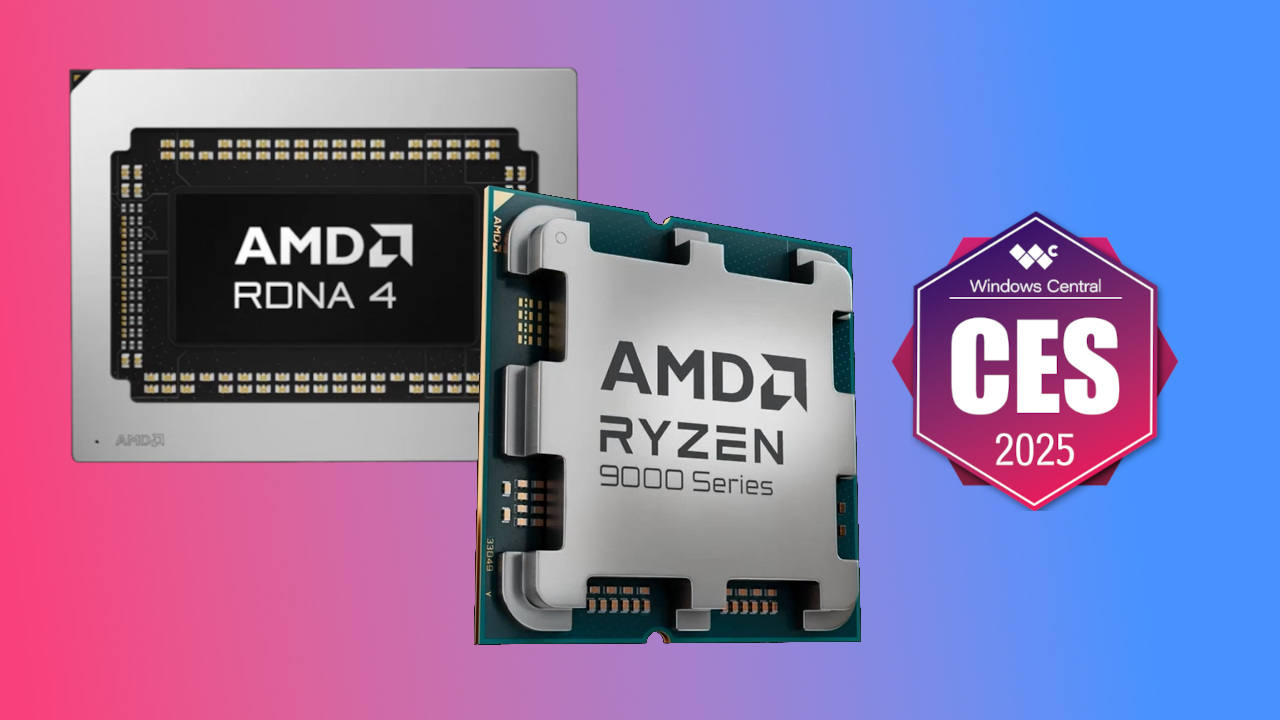
Calling the launch of AMD's Ryzen 7 9800X3D desktop CPU in November 2024 a success is an understatement; it sold out everywhere almost immediately, and it's still hard to find for a reasonable price a couple of months later. AMD brings good news to CES 2025 for any desktop gamers and creators craving the benefits of AMD's 3D V-Cache and Zen 5 architecture.
Today, two new Ryzen 9 chips with second-gen V-Cache were announced. The Ryzen 9 9950X3D is the chip stealing all of the attention with its 16 cores and 144MB cache, but its Ryzen 9 9900X3D sibling isn't far behind with 12 cores and a 140MB cache.
Both CPUs are expected to launch in Q1 2025, and from what AMD has shown, the 9950X3D is easily the best chip for any gamers who also spend time working with creative apps from the likes of Adobe, Davinci, Blender, and more.
AMD's Ryzen 9 9950X3D shouldn't threaten the 9800X3D's gaming supremacy
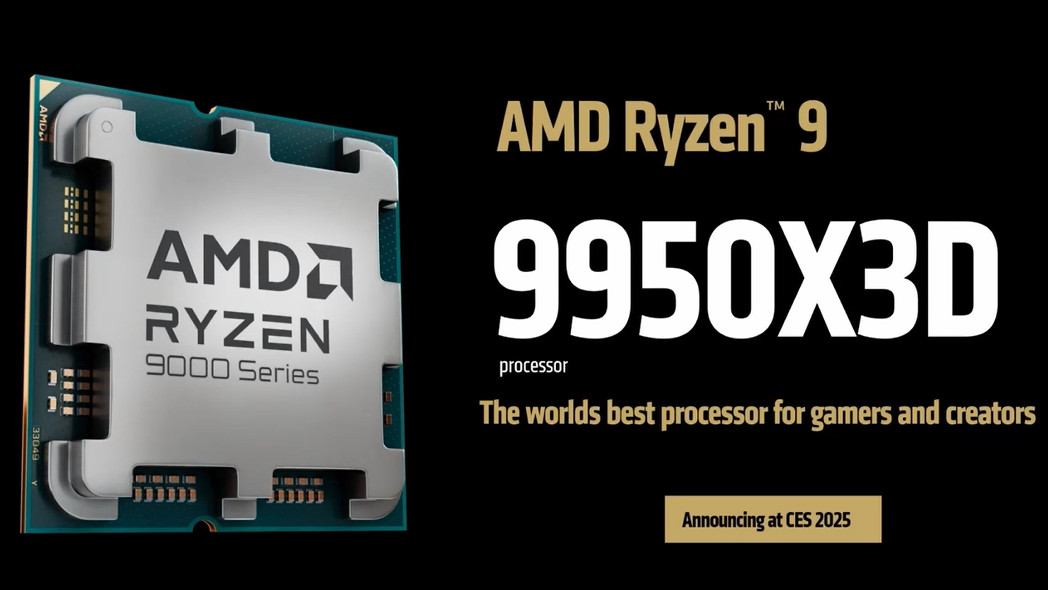
The Ryzen 9 9950X3D is headed our way with 16 cores, 32 threads, and 144MB of total cache space. It runs at a base 170W TDP, and it can reach up to a 5.7GHz frequency at max boost. That's twice as many cores and threads as the current gaming champ — the Ryzen 7 9800X3D we reviewed — but you shouldn't expect a massive uptick in performance when it comes to pure gaming.
As AMD points out, gaming performance comparisons between the 9800X3D and 9950X3D are within 1%; the company is now calling the Ryzen 9 9950X3D "the world's best gaming processor," but day-to-day gaming performance differences shouldn't be big enough to notice in real-time.
Here's a look at raw specs from the new 9950X3D, its new 9900X3D sibling (which I cover more below), and the popular Ryzen 7 9800X3D that launched two months ago.
Significant performance gains compared to Intel's Core Ultra 9 285K
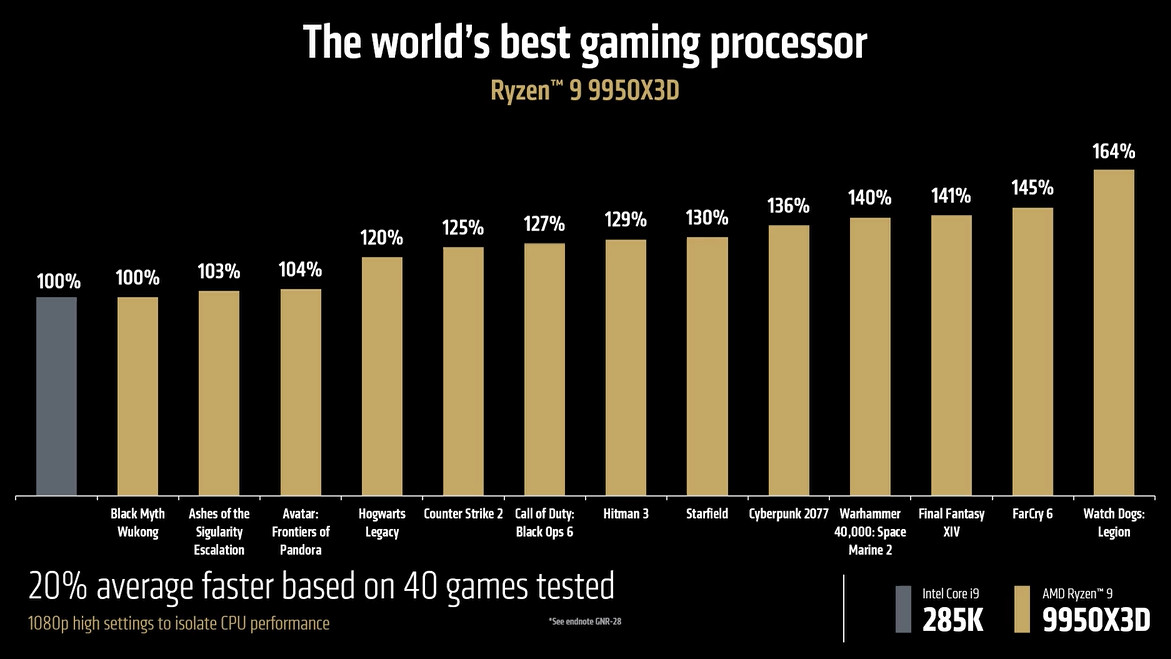
So, how did AMD do it? Let me back up for a moment. The "X3D" part of the CPU's name denotes the inclusion of 3D V-Cache tech, which is unique to AMD's high-performance chips. AMD stacks the processor's cache — used for frequent, fast, and temporary storage — vertically on the die, allowing for more cache space and lower latency. This directly results in a significant boost to gaming performance.
With the new Zen 5 architecture used by AMD's latest chips, the 3D V-Cache is now located below the CPU's cores to promote better core cooling. This is a major point in how AMD has boosted power while keeping temperatures within reason. The Ryzen 7 9800X3D in my personal gaming PC has the same tech, and it rarely climbs above 55°C even when under heavy gaming load. It's impressive, and it benefits users directly.
Turning back to the Ryzen 9 9950X3D specifically, AMD has a stacked cache to boost gaming performance, but it also has a max-frequency unstacked cache next to it that largely benefits creative work. AMD employs the same general idea in its past Ryzen 9 X3D CPUs, which have traditionally been the go-to chips for those who enjoy both gaming and creating.
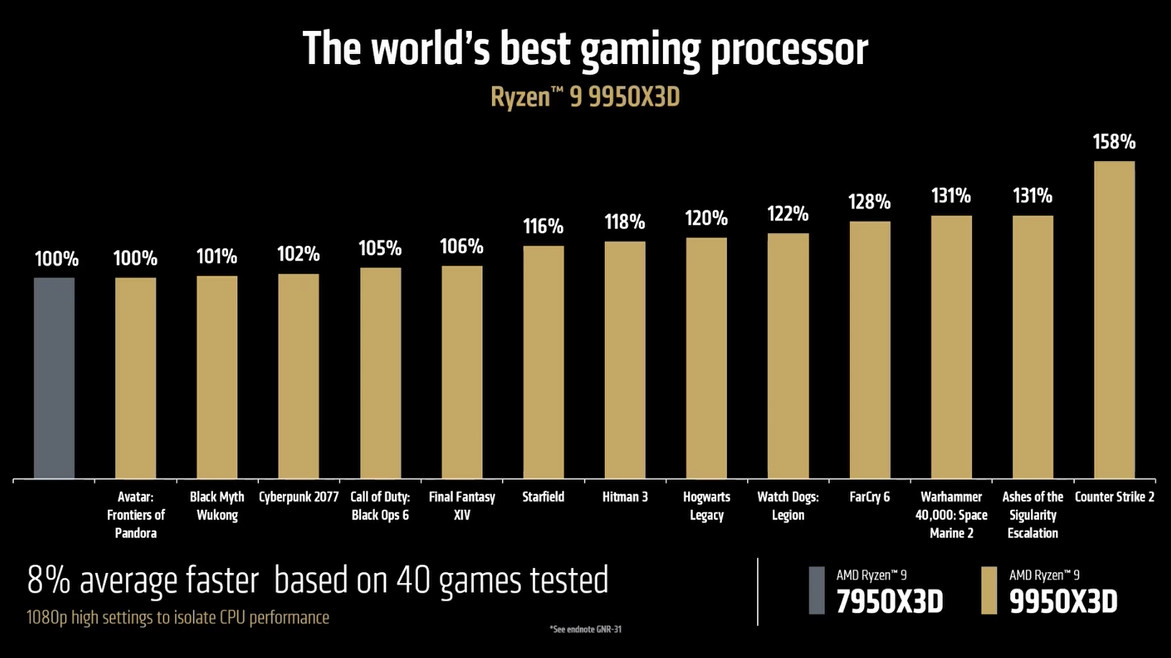
Compared to its 7950X3D predecessor, as well as Intel's flagship Core Ultra 9 285K, performance gets a major boost. AMD claims that the 9950X3D can offer an 8% average uptick at 1080p compared to the Ryzen 9 7950X3D, topping out at a 58% increase in Counter-Strike 2.
Looking at the Core Ultra 9 285K, AMD says it hits a 20% average improvement at 1080p. Notable standouts are Cyberpunk 2077 with a 36% increase, Far Cry 6 with a 45% increase, and Watch Dogs: Legion with a massive 64% increase.
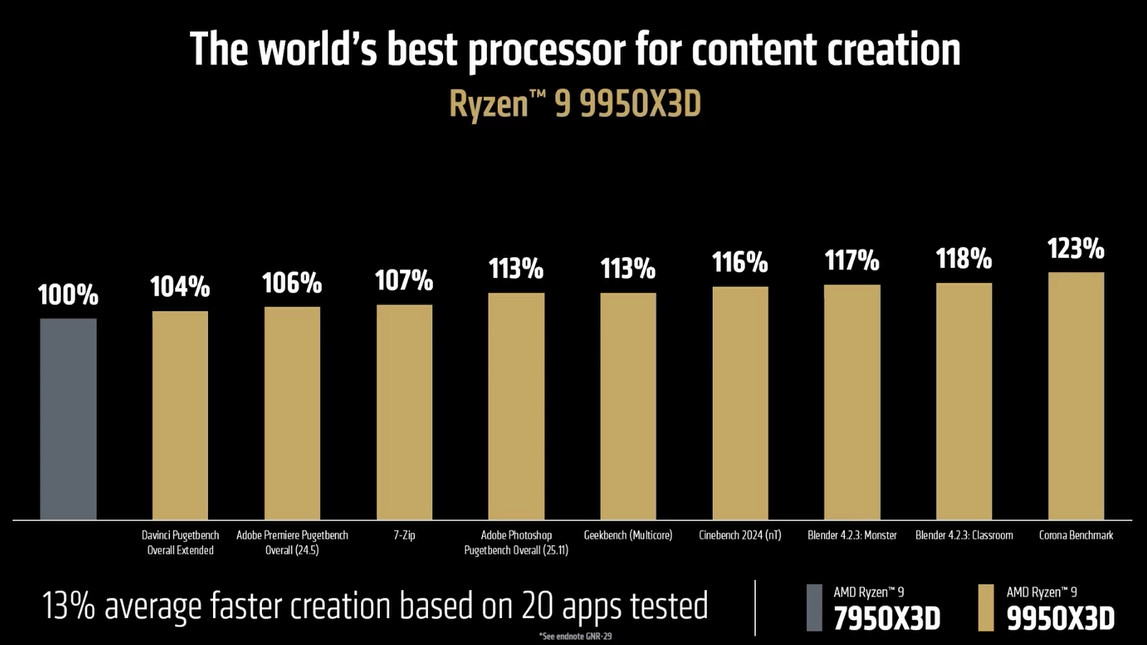
The Ryzen 9 9950X3D doesn't stop with gaming. Compared to the 7950X3D predecessor, AMD says the new chip can offer an average 13% performance increase in popular creative apps. Upticks are fairly flat, ranging from 4% through 23%.
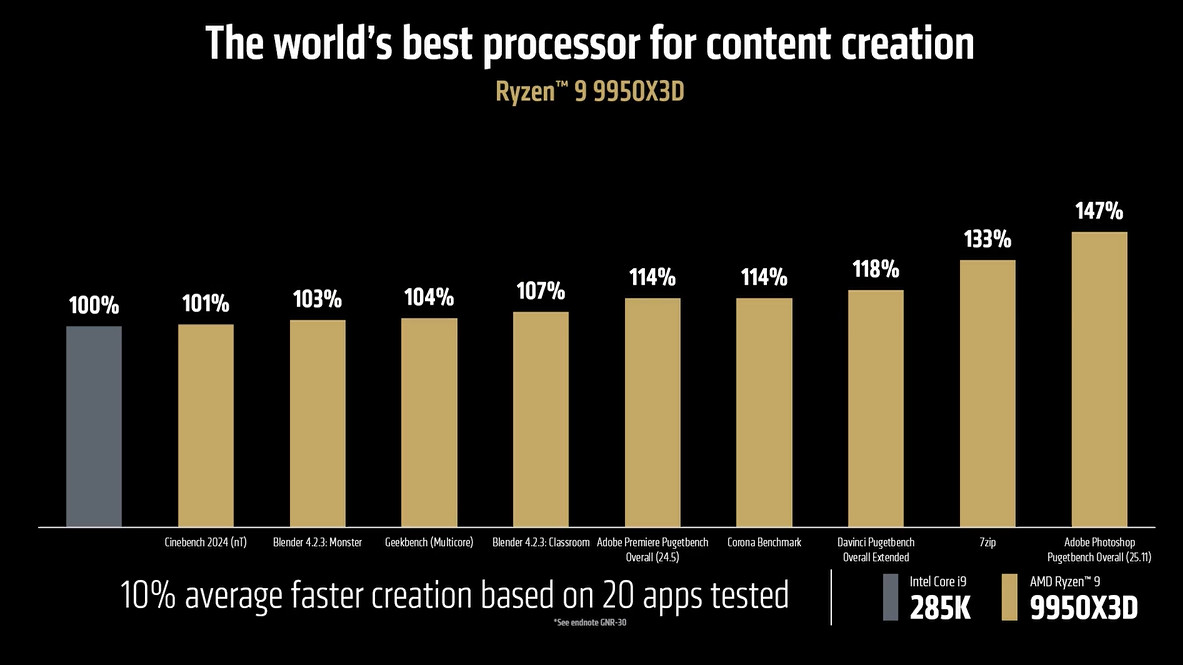
Comparing it to the Core Ultra 9 285K, on the other hand, results in an average improvement of 10%. However, the range is much broader, from 1% in Cinebench 2024 up to 47% in Adobe Photoshop.
AMD also slid a sibling CPU in alongside the 9950X3D. The Ryzen 9 9900X3D comes with 12 cores, 24 threads, and a 140MB total cache. It can boost up to a 5.5GHz frequency, and it rests at a more modest 120W TDP.
AMD hasn't yet mentioned any pricing for these new chips, but they'll assumedly be more than the Ryzen 7 9800X3D's introductory $479 MSRP. Both the Ryzen 9 9950X3D and 9900X3D are expected to launch in Q1 2025.
AMD previews RDNA 4 desktop GPUs at CES 2025
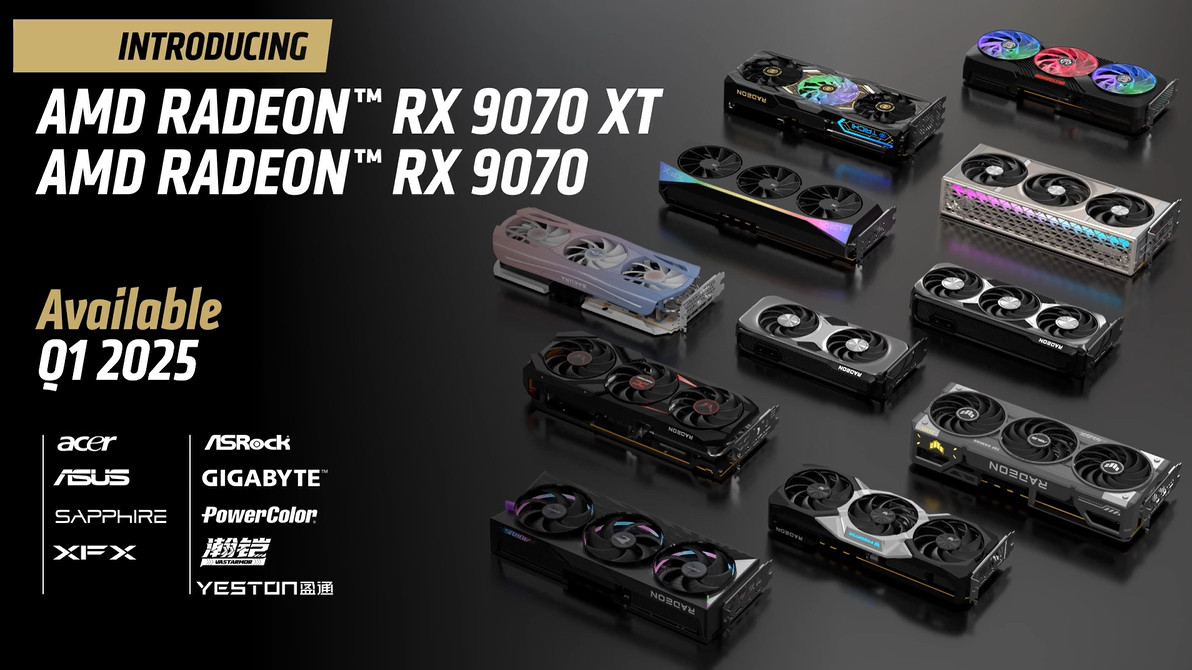
There have been plenty of rumors and leaks surrounding AMD's Radeon RX 9070 XT desktop GPU, but the company just made it official.
Built on the new RDNA 4 architecture, the RX 9070 XT and its RX 9070 sibling offer optimized compute units, a reorganized architecture that boosts IPC and frequency, an overhauled AI compute architecture, and "substantial improvements to media encode and decode engines." RDNA 4 uses a 4nm process, with AMD's second-gen AI accelerators, third-gen ray tracing accelerators, and second-gen Radiance Display engine.
AI is a big focus here, as AMD has also unveiled FidelityFX Super Resolution 4 (FSR 4) alongside the new RDNA 4 cards. To put it briefly, FSR is roughly the same sort of upscaling tech used by NVIDIA (DLSS) and Intel (XeSS) to boost frame rates and quality in compatible games.
AMD claims that it's made "dramatic improvements in terms of performance and quality compared to prior generations," but we'll have to test ourselves to confirm. FSR 4 is expected to only be available for RX 9070-series GPUs and will only work in games that already have FSR 3.2 in place.
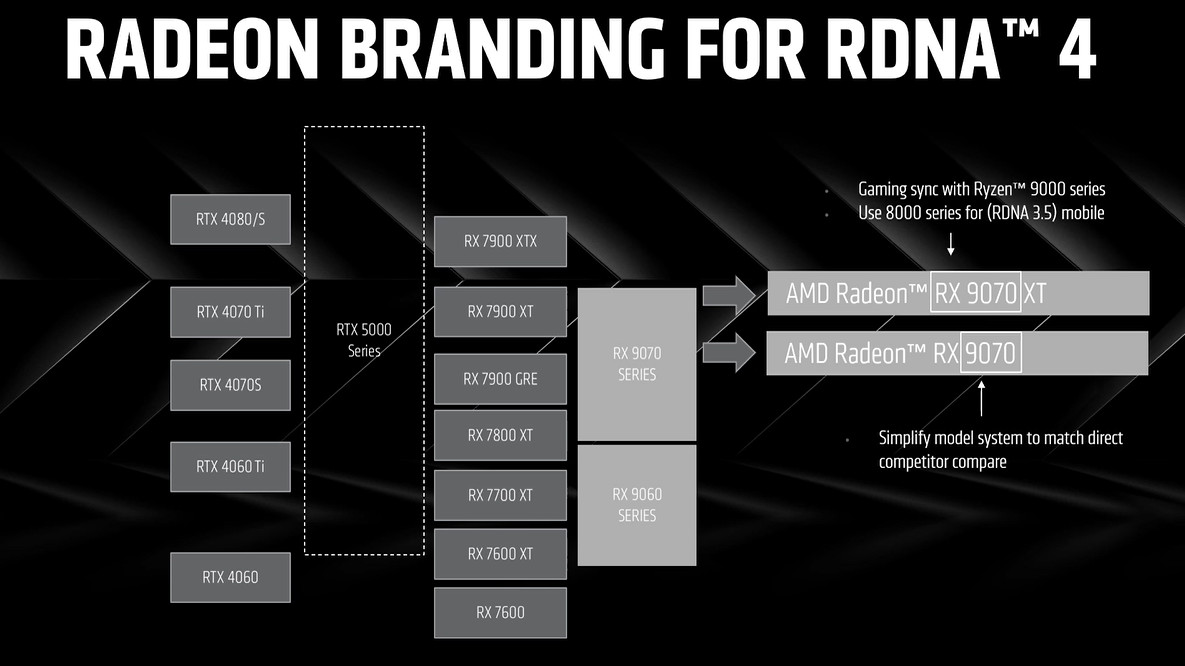
Fans of Team Red likely already noticed a change in AMD's GPU naming scheme. Coming from cards like the RX 7900 XT, it was expected for a while that the RDNA 4 cards would have some sort of 8xxx name.
AMD mixed it up instead to bring its new GPUs in line with its latest Ryzen processors. AMD's RDNA 3.5 mobile GPUs will continue to use 8000-series branding, but new cards will be 9000-series for the foreseeable future.
AMD says it's using the 9070 XT name, for example, to allow easier comparison between NVIDIA's cards. Details are still sparse, but I envision an AMD Radeon RX 9070 matched up alongside NVIDIA's 5070, with XT/Ti models also drawing up next to each other. You get the idea.
More information surrounding RDNA 4 is expected soon, as the cards should launch in Q1 2025. AMD says that all of its board partners (like Acer, ASUS, Sapphire, and more) are producing RX 9000-series desktop GPUs.







